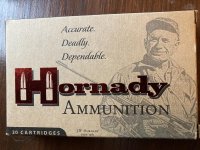Oh, also didn’t any one tell them Lead is naturally
in the ground. Where do they think Lead comes
from? lol
I grew up in South Dakota and interestingly enough, I just completed a month or so of ag flying in Madison SD where much of the anti lead movement got started in the Fish and Wildlife Center located there.
The whole lead free push started in the late 1970s and early 1980s over concerns that ducks, geese and other waterfowl would eat lead shot off the bottom of ponds and lakes and do it intentionally as they need small pebbles for their digestive track.
The lead shot would get ground up in their gizzards and cause lead poisoning. The lead poisoning itself usually wasn’t fatal but was thought to weaken their immune systems and cause greater susceptibility to other avian diseases.
I don’t necessarily disagree with the theory, but the data is interesting. The normal die off during seasonal migration at the time was about 20 million birds with another 15 million taken by hunters. Of that the FWS estimated between 1.6 and 2.1 million birds were killed directly or indirectly by lead poisoning, mostly in the spring of the year and in drought conditions. That’s a 4 to 6 percent increase above normal mortality and losses to hunting.
That made for a weak argument for banning lead shot in part because lead shot resulted in more wounded birds that would not be brought down and counted in a daily limit. Thus the move to steel shot potentially increased the mortality due to hunting above the 15 million by a lot more than the 4-6% they were trying to prevent with a ban on lead shot.
To bolster that weak argument the FWS made the claim that raptors and scavenger birds like bald eagles, hawks etc, were ingesting lead from the carcasses of waterfowl that were killed by lead positioning. Initially they didn’t suggest that Eagles etc were eating the lead shot from the carcasses but instead the claim was made that the lead concentrated in the internal organs of the waterfowl that were then eaten by the eagles, etc. The data to support this claim is a bit weak and centers on roughly 1/5 of dead or injured eagles showing some signs of lead toxicity or signs of lead in blood samples although I have never seen lead itself cited as the cause of death of these eagles. Still, I don’t entirely disagree with the theory.
https://www.fws.gov/news/Historic/NewsReleases/1977/19770708.pdf
A decade or so later that the argument spread to upland game areas. In this case the claim was again made that birds like pheasants and grouse were eating the shot off the ground for digestive purposes, and that once again Eagles, etc would get secondary lead poisoning eating the internal organs of upland birds that died of lead poisoning. They also added the argument that prey animals directly ingested lead from dead or dying birds that had been wounded by lead shot.
The data for that argument was even less convincing but as upland game hunting was more prevalent with about 5 times the lead shot used (but spread over a much much larger area than waterfowl hunting), the “more lead shot must be worse” argument proved effective at the federal level and in some states.
https://digitalcommons.unl.edu/cgi/viewcontent.cgi?article=1135&context=usepapapers
Eventually the argument for lead free bullets evolved when the theory was extended to gut piles for larger game animals like deer and antelope where the theory was prey and carrion animals would ingest the bullet or bullet fragments.
That’s the point where the whole argument became almost total BS. I’ve rarely seen well constructed hunting bullets fragment in a medium or large sized game animal, unless it’s a light bullet pushed to excessive velocity from a magnum cartridge *and* at short range *and* striking a bone. All four of those conditions occurring at once is very rare. In most cases the bullet passes entirely through a medium sized animal like a deer or antelope. In cases where it does not hunters, being generally curious about bullet performance, tend to recover the bullet anyway. If it is retained in the animal it’s generally in the carcass taken home by the hunter and not in the gut pile.
At that point the motivation seems to have been directed more at anti hunting over all and reducing access to public hunting areas by increasing the costs associated with hunting.
It’s bad enough that way too many hunters only shoot a few rounds prior to their hunting season. In the extreme I still meet the hunter now and then who still brags about using the same box of ammo for hunts for X number of years, implying he only shoots a few rounds per year to take a deer, etc.
Requiring more expensive copper bullets potentially has the unintended consequence of hunters practicing and or confirming the zero of their field load even less frequently and doing an even worse job of humanely killing animals in the field with more animals wounded, not recovered and dying later.
A copper bullet in that case might appear to pose less risk to raptors who might feed on the carcass, but they are very unlikely to eat a lead bullet out of a carcass anyway.


